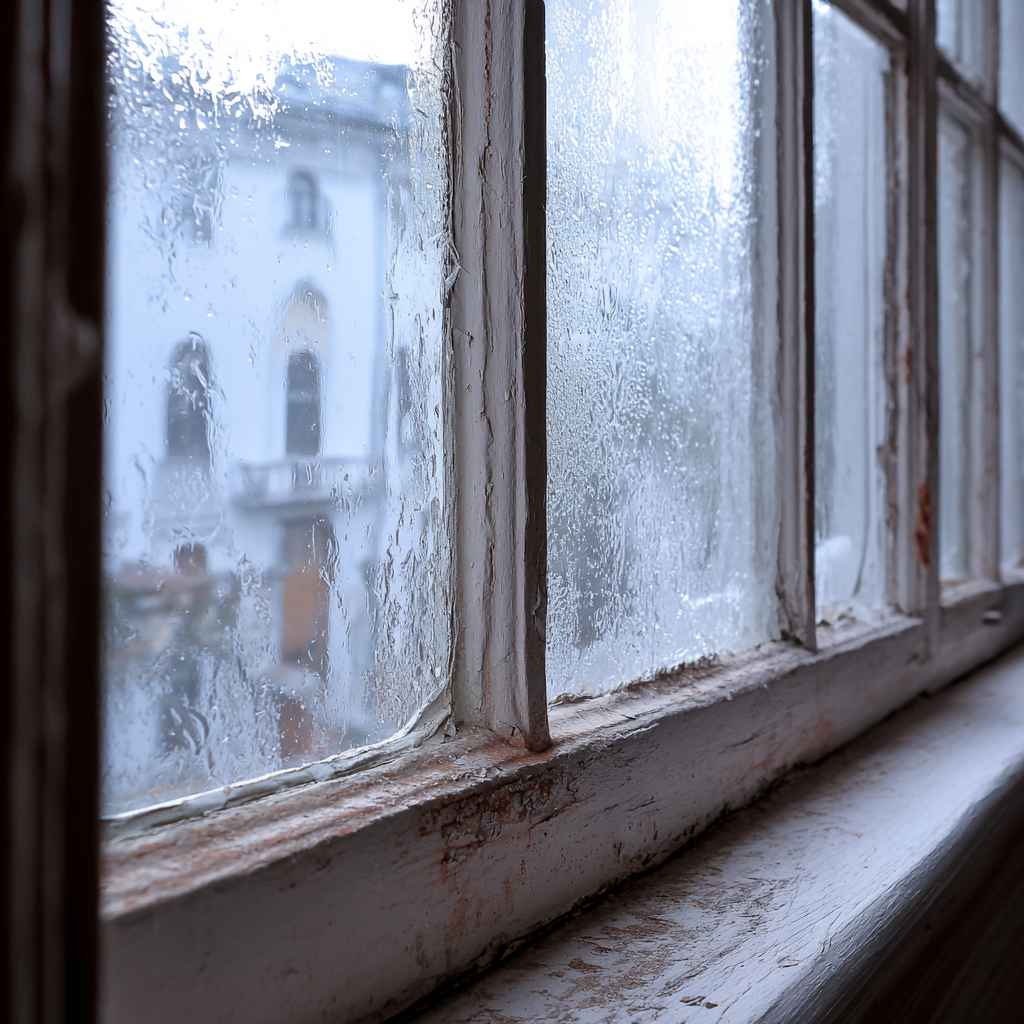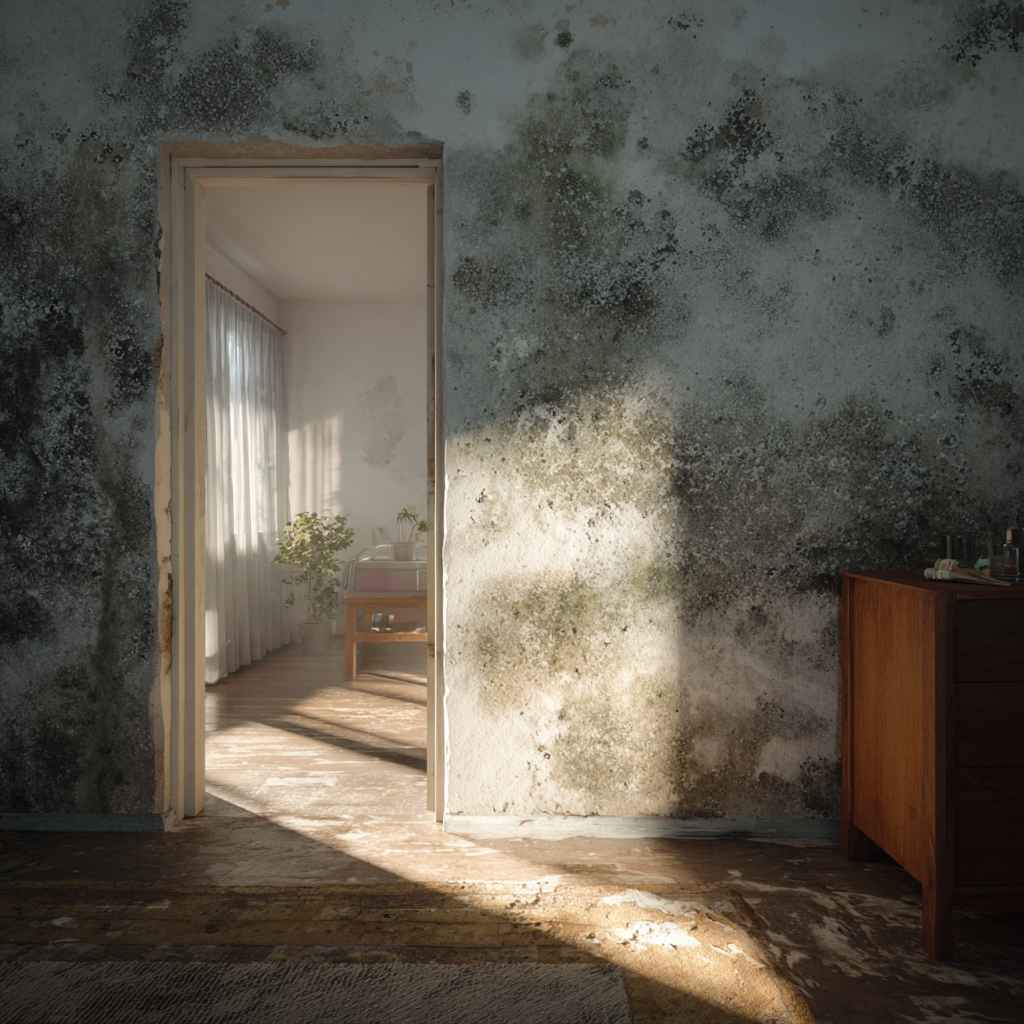Key Take Aways
Condensation is the most common culprit—warm, humid air meeting cold walls leads to moisture build‑up, especially in kitchens and bathrooms.
Poor ventilation traps moisture indoors; without fresh airflow or extractor fans, dampness worsens .
Rising damp occurs when ground moisture travels upwards due to a faulty or absent damp‑proof course (DPC).
Penetrating damp comes from external leaks—such as damaged gutters, roof issues, or cracks—allowing water into walls.
Hidden pipe leaks can silently radiate moisture into walls over time and must not be overlooked.
Identify moisture issues by visual signs (stains, mould, peeling paint) and use moisture meters or hire professionals for assessment.
Combat damp with improved ventilation (extractor fans, trickle vents), consistent heating, dehumidifiers, and prompt leak repairs.
Insulation upgrades help maintain wall warmth and prevent condensation; reinstating or installing a DPC stops rising damp.
Preventive measures include external waterproofing, proper garden grading, adequate drainage (e.g. French drains), and ensuring attic/basement ventilation .
Health & structural risks of untreated damp include mould, dust mites, deteriorating masonry, corroding metal, rot, and asthma/allergy issues.
The moisture in buildings is a prevalent concern, especially in colder areas. When walls seem moist or damp, it can lead to several difficulties, from architectural damage to illnesses. It’s essential to comprehend the reasons behind moist walls and the solutions to provide a safe and healthy living space. This post will examine the reasons behind moisture, provide advice on how to handle it, and suggest workable remedies to stop damp surfaces in the future.
Common Causes of Wet Walls
- Condensation
One of the most frequent causes of damp stains on walls, especially in cold weather, is condensation. Warm, humid air condenses into droplets of water when it comes into touch with a colder surface, such as an outside wall. This is frequently observed in kitchens, restrooms, and other high-humidity locations.
- Poor Ventilation
Condensation can be made worse by inadequate ventilation. When there is insufficient ventilation, moisture builds up and causes walls to become wet. This is especially troublesome in well-insulated homes with restricted airflow.
- Rising Damp
When dampness from the earth rises through a building’s walls, rising dampness happens. This may be the result of an inadequate or malfunctioning damp-proof course (DPC), a barrier intended to stop moisture from rising.
- Penetrating Wetness
Water seeping into the structure from the outside is the source of penetrating wet. This may be the result of damaged gutters, leaks in the roof, or wall fissures. It is frequently easier to see after a lot of rain or snow.
- Pipe Leaks
If the wall is wet can also result from plumbing leaks that are hidden. Even a tiny leak over time might result in substantial moisture buildup and damage.
Identifying the Problem of Wet Walls
- Visual Inspection
Keep an eye out for warning indicators such as discoloured patches, flaking paint, moist areas on walls, and mould development. These are unmistakable signs of moisture.
- Moisture Meters
You can measure the moisture content of your walls precisely by using a moisture meter. These tools can give an accurate measurement of the moisture content and may be rented or purchased.
- Professional Assessment
It might be essential to seek expert assistance if you’re unable to locate the origin of the moisture. A land inspector or damp specialist may carry out an exhaustive examination and suggest suitable remedies.
Tips for Dealing with Dampness & Wet Walls

- Improve Ventilation
Improving ventilation is a critical first step in the fight against condensation. This may be accomplished by:
– Using Extraction Fans: To eliminate wet air, use extractor fans in kitchens and bathrooms.
– Opening Windows: To let in fresh air, open your windows regularly.
– Trickle Vents: To offer constant ventilation without noticeably compromising insulation, install trickle vents on windows.
- Maintain Heating
Dew may be avoided by maintaining a constant temperature in your house. Particularly in colder months, try to keep the temperature from falling too far.
- Use a Dehumidifier
Lowering the humidity levels inside is something that dehumidifiers can accomplish well. Put them in wet places to aid in the absorption of excess moisture.
- Repair Leaks Promptly
Any roof or plumbing leaks should be fixed right away. Ignoring them can result in structural deterioration and more serious moisture issues.
- Upgrade the Insulation in Your House
Condensation-causing cold surfaces can be avoided with enough insulation. Insulate pipes, lofts, and walls to keep the temperature within your home steady.
- Damp-Retarding
Installing or fixing a moisture-proof course is crucial if increasing dampness is the problem. To stop moisture from rising, a barrier must be positioned at the bottom of the walls.
Preventing Future Dampness of Wet Walls
- Waterproofing
Water intrusion can be avoided by covering external walls with a waterproof material. This is especially helpful for older structures made of permeable brick.
- Appropriate Gardening
Make sure your home’s surrounding terrain slopes out of the foundation. This lessens the possibility of wet seeping through the walls by keeping water from collecting there.
- Appropriate Drainage
Verify the suitability of the drainage system in your house. To handle extra water, install sump pumps or French drains as needed.
- Allow Basements and Attics to Vent
Condensation and related damp issues may be avoided in lofts and basements with adequate ventilation. To keep the air flowing in these areas, use fans and vents.
Dealing with Damp Lofts
- Loft Insulation
By insulating your wet loft in cold weather, you may avoid chilly patches that could lead to condensation. Make sure the loft space is completely covered with insulation and that it is fitted correctly.
- Loft Ventilation
In cold weather, having adequate ventilation is essential to avoiding a damp loft. Make sure there are enough vents to let air flow through and prevent moisture accumulation.
- Roof Repairs
Look for any damage or leaks on the roof that can let water into the loft. To stop more moisture, take quick action to fix any problems.
Health Implications of Dampness Wet Walls

- Mold Growth
Mould thrives on damp walls, which can have detrimental effects on one’s health. Mold spores can lead to allergies, respiratory disorders, and other health concerns.
- Dust mites
Dust mites are known to cause asthma attacks and other allergic responses, therefore a rise in them can also be linked to high humidity and wetness levels.
- Structural Damage
An establishment’s structural stability may be compromised by ongoing moisture. Masonry may erode, metal can corrode, and wood can decay, all of which can result in expensive repairs and even safety risks.
Conclusion
Managing moisture and wet walls, especially during the winter, calls for an all-encompassing strategy. You may successfully control and avoid moisture in your house by being aware of the reasons and putting the advice to use. Do not forget to purchase enough insulation, rapidly fix leaks, and maintain appropriate ventilation. Preventive maintenance and inspections are essential to maintaining a dry, secure, and cosy house.
Don’t be afraid to get expert assistance from All Weather Coating if you’re dealing with continuous moisture and are unclear about the source or solution. By taking care of the problem right away, you and your family may live in a healthier atmosphere and avoid larger issues later on.
The durability and security of your house depend on your ability to recognize and deal with moisture. You may reduce the problems connected with moist walls All Weather Coating and make your living area more cosy and healthful according to these recommendations.







